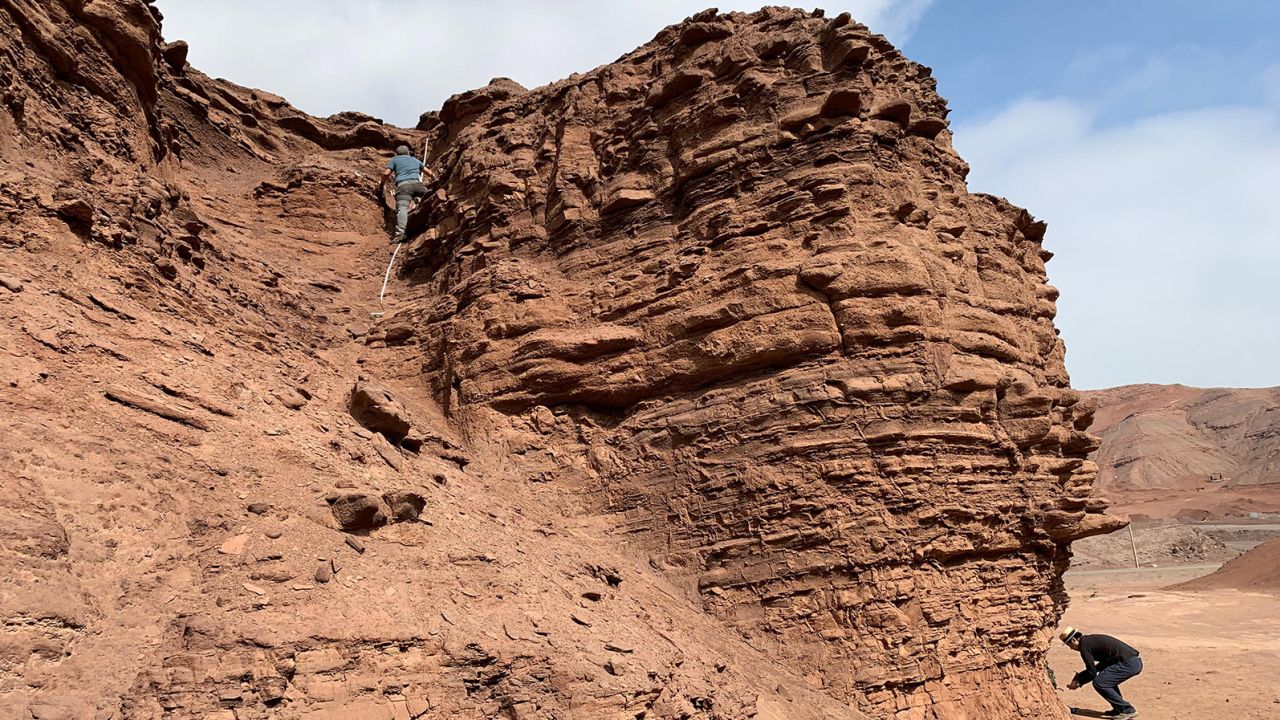NASA photographs a rock formation on Mars that looks like a bear 0:59
(CNN) --
Finding possible signs of life on Mars could be harder than expected, according to new research.
Missions like the Perseverance and Curiosity rovers are equipped with a suite of scientific instruments that can analyze rock and dust samples and collect data about the red planet.
However, these instruments, as well as those designed for future missions, may not be sensitive enough to detect biosignals, that is, signs of existing or ancient life.
To test the capabilities of these scientific tools, the researchers went to the Chilean Atacama Desert, the driest place on Earth and the oldest desert in the world.
This arid desert has long been considered a Mars analogue by scientists, especially when researchers stumbled across the Jurassic fossil delta of Piedra Roja.
The river bed, 100 million years old, resembles Jezero crater and its ancient river delta on Mars.
A bear on Mars?
Look at the unusual discovery made by NASA
The Perseverance rover is currently exploring the crater and delta, where a lake and river existed more than 3 billion years ago, to search for signs of ancient life and collect samples.
The soil and rocks collected by Perseverance will be returned to Earth in the 2030s by NASA's Mars Sample Return Campaign and the European Space Agency.
A team of researchers explored the Piedra Roja site in northern Chile to see how it compared to Jezero Crater and found that it was geologically similar, composed of sandstone and clay, as well as hematite, the same iron oxide that gives Mars its distinctive red hue.
Mars-like conditions on Earth
The researchers collected samples from the riverbed and analyzed them with highly sensitive laboratory equipment.
When pushed to the limits of their detection capabilities, the lab team's analyzes revealed a mix of biosignatures from both extinct and living microorganisms.
Although incredibly dry, the Red Stone is close to the ocean, where the mist provides water for microbial life.
advertising
A bacterium could reveal mysteries of life on Mars
Many of the microbes' DNA sequences came from an unidentifiable "dark microbiome," a nickname for the genetic material of hitherto unknown microorganisms.
The researchers coined the term because it is similar to dark matter, a hypothetical form of matter in the universe that remains unidentified.
The Red Stone bed is 100 million years old and geologically similar to Jezero crater on Mars.
Credit: Armando Azua-Bustos
The researchers went a step further and tested four scientific instruments designed to explore the red planet on samples they collected from the ancient river bed.
Despite being highly sophisticated, the instruments were barely able to detect any molecular signatures, showing that the tools may not be sensitive enough to accurately detect biosignals.
The study was published Tuesday in the academic journal Nature Communications.
Detecting life will require advanced tools
Missions to Mars have been searching for signs of life on the red planet since the first Viking landers arrived on the planet in the 1970s. The most advanced instruments on subsequent NASA missions have detected simple organic molecules, but these can created by chemical reactions unrelated to life.
If life existed on Mars billions of years ago, only low levels of organic matter are expected to remain, which means that identifying past signs of life on Mars will be incredibly difficult with current technology, according to the study.
"The possibility of obtaining false negatives in the search for life on Mars highlights the need for more powerful tools," says the study's lead author, Dr. Armando Azúa-Bustos, a research scientist at the Center for Astrobiology in Madrid.
Toxic lake near Poás volcano in Costa Rica reveals how life on Mars could have been possible before
The study results support the goals of the Mars Sample Return program, a multi-mission effort that will send Martian rocks and soils back to Earth, where scientists can analyze them using state-of-the-art laboratory equipment to look for unequivocal signs of life.
"Our results underscore the importance of returning samples to Earth to conclusively determine whether life ever existed on Mars," the researchers write in the study.
Care will have to be taken when evaluating the first Martian samples returned to Earth, Carol Stoker, a planetary scientist at NASA Ames Research Center in Mountain View, California, wrote in an opinion piece accompanying the study.
Stoker was not involved in the investigation.
"Any biological activity in these samples presumably took place billions of years ago, and only a few small samples can be brought back to Earth for study," Stoker wrote.
"It remains to be seen whether unequivocal signatures of life can be found in these limited samples. We must be cautious about interpreting the absence of strong evidence of life as proof of its non-existence!"
One of the tested instruments will travel to Mars aboard the first European rover, Rosalind Franklin, whose launch to the red planet is scheduled for 2028.
The Perseverance rover will build a one-of-a-kind reservoir on Mars
"(It will carry) a drill with the unprecedented capacity to reach a depth of 2 meters to analyze sediments that are better protected against the harsh conditions of the Martian surface," says Alberto G. Fairén, co-author of the study, research scientist at the Center. of Astrobiology in Madrid and visiting scientist in the Department of Astronomy at Cornell University.
"If biosignals are better preserved at depth, as we expect, there will be more abundance and diversity, and better conservation of biosignals, in those deep samples. Our instruments on the rover will therefore have a better chance of detecting them."
AtacamaMars

